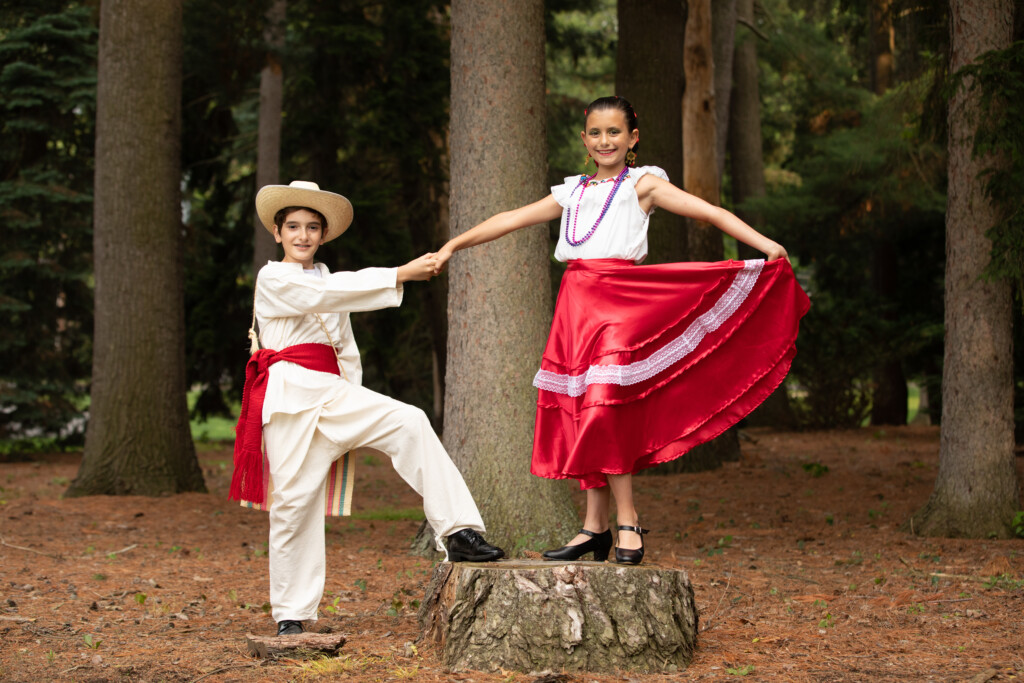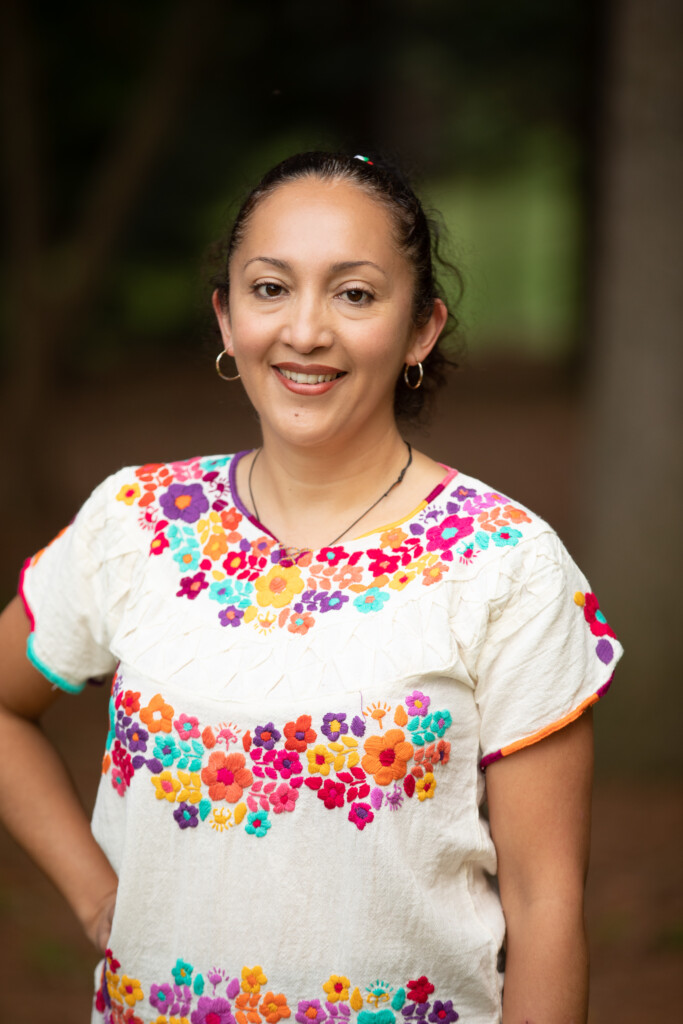At Casa Hispana on the Nazareth College campus in Pittsford, a group of young dancers, ranging from six to twelve years old, eagerly gather for their weekly Mexican folklórico lesson. Led by Karla Slack-Alcalá, a Mexican-born Rochester resident, these young minds immerse themselves in the enchanting traditions of Mexican culture as dancers of Alma de México. Tonight, they are gathered to rehearse a routine involving the skillful balancing of a glass cup on their heads. As Slack-Alcalá explains, this unique element is an integral part of a performance they will present for observing the Day of the Dead during a Hispanic/Latinx Heritage Month event in Rochester. They work on steps for a dance to the traditional Mexican folk song “La Bruja,” which translates to “The Witch.”
As Slack-Alcalá guides her class, her skills as an interdisciplinary artist and teacher shine through. She has been dancing and performing since the age of eight. Forming the folklórico group allows her to honor two passions: Mexican culture and the art of performance.
She studied the arts at Instituto Nacional de Bellas Artes de Mexico and earned a degree in physical education. Early on, she says, she sought every opportunity to finetune her skills and understand the body and movement. She also joined the international performing group Tonalli Ambar as a performance artist and performed in Belgium, Spain, France, and Cuba. Always a teacher at heart, she cherished her first experience leading an ensemble of forty dancers aged six to fifteen, who called themselves Mexicatlalli.
But everything changed for her while vacationing in Oaxaca, Mexico, when she met someone and soon got married. She embarked on a new adventure leading her to the US and Rochester. It wasn’t long before the physically active Slack-Alcalá would seek to start a folkloric performance group in her new home.
Launched in 2017, the group began performing in parks or outdoor spaces. “I found Alma de México on Facebook, someone was promoting them, or they were involved,” recalls Felicia Garcia-Hartstein of Brighton. A Mexican American, Garcia-Hartstein moved to western New York from the Colorado area more than seventeen years ago. She was searching for ways her children could find a meaningful connection to their heritage. “I grew up around ballet folklórico, Mexican music, and Mexican dancing, and I searched for organizations led by Latinos and Latinas.”
[gtx_gallery]
With more than twenty-five years of experience, Slack-Alcalá has quickly become a sought-after resource and performer in Rochester and its surrounding areas. She presents performances at various schools, local events, and the annual Rochester Fringe Festival. She is a member of the International Council of Dance – UNESCO and lends her skills and knowledge to area students at Nazareth College and Rochester Institute of Technology.
Alma de México has expanded in recent years to include ensembles made up of members from the migrant community in Sodus. They participate in dance performances and regularly observe Mexican cultural traditions, like the Feast of Candelaria in February or Posadas, celebrating the nativity story in December. “We eat tamales, and the kids learn traditional games,” Slack-Alcalá says.
Each dance ensemble learns the traditional dances from different regions of Mexico. “Every state has its own identity, and they have been learning [regional dances from] Chiapas, Jalisco, Veracruz, and Sinaloa,” she says. For example, “the Mexican zapateado includes the work of all parts of the foot: sides, heel, toes, metatarsal, and flat. I teach the same [routine] to every group, and the moment we have a performance, everyone knows what to do when they are together,” she says.
The performance group is regularly invited to dance at various locations, including the Memorial Art Gallery at the University of Rochester, the International Plaza in the City of Rochester, the Recreational Center in Perinton, and the downtown streets of Medina. They travel across the region and neighboring counties whenever they can.
A ball of energy and inspiration, Slack-Alcalá prepares her dancers to be ready for any stage. “I encourage them to be confident,” she says.
Garcia-Hartstein remembers the first time her nine-year-old daughter, who tends to be reserved, got on stage: “She was happy and looked confident. My husband and I were in awe of that.” Audiences are different everywhere they go. “Some are quiet and try to understand our approach,” Slack-Alcalá says. And others start to clap and move immediately. The group aims to promote and educate people about the Mexican culture. “I want them to learn other things besides the Mexican hat dance,” she adds. While the meaning of some of the dances can be obvious to some, to others, it may not be. Although, an attentive audience can watch body movements and understand the stories told through the dancer. With every group comes challenges, and resources are on the top of the list for Slack-Alcalá. Alma de México is an LLC, so she cannot apply for grants. Many of the funds come from the money she earns hosting camps or cooking classes. She may look to future partnerships but wants to focus on sharing Mexican traditions and dances for now. “I always have things to do. I’m making headsets. I do fittings and modify costumes. We do everything ourselves.”
Looking to the future, she hopes to create another extension by adding a music ensemble. She wants to introduce the dances of the Aztecs, the ancient indigenous people of Mexico, to new audiences. “Since I started to teach, I am proud of myself,” she says. “Almost everyone I know here, it is their first time performing, and when I see them do what they have learned, I am happy.”
Like the Alma de México Facebook page or email
al*************@gm***.com
for more information.
Views: 1






